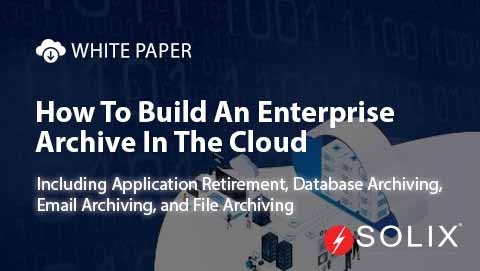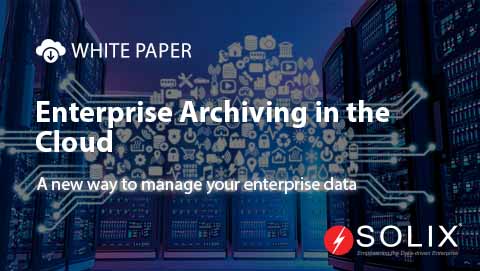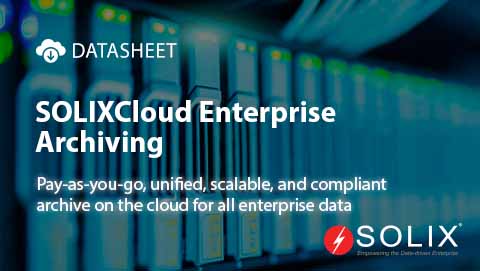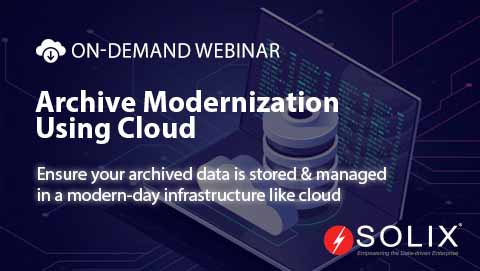Windows Backup Service
as a cyber governance & risk management leader, i’ve had the privilege of working with numerous organizations to help them overcome the challenges of Windows Backup Service. but what exactly is Windows Backup Service, and why does it matter? in this blog post, i’ll explore the importance of Windows Backup Service and show how solix can help you solve this pressing issue.
what is Windows Backup Service and why does it matter?
Windows Backup Service is a critical aspect of any organization’s data management strategy. it’s the process of selecting, collecting, retrieving, preserving, and providing access to data so that it can be used for various purposes such as disaster recovery, compliance, and business continuity. without an effective Windows Backup Service in place, organizations risk losing valuable data, compromising compliance, and disrupting business operations.
a real-world scenario: transforming Windows Backup Service for success
let’s consider a scenario where acme corporation, a leading manufacturer of consumer goods, discovers that their legacy application is no longer being used, but it’s still consuming valuable data center resources. they need a solution that can help them retire the application while ensuring compliance with regulatory requirements.
that’s where solix comes in. our solution, solixcloud application retirement and decommissioning, enables organizations to rationalize their application portfolio and reduce infrastructure costs. with this service, acme corporation can retire the legacy application at a low, fixed monthly cost, meet compliance goals with policy-based data retention, and provide end-user access to retired data via full-text search, forms, reports, and ad-hoc queries.
how solix saves money and time on Windows Backup Service
solixcloud application retirement and decommissioning offers several benefits that can save organizations money and time on Windows Backup Service. for instance, our solution helps reduce infrastructure costs, eliminates maintenance, infrastructure, and licensing costs of legacy applications, and leverages solix’s application management experts to deliver the project efficiently and at the lowest cost.
cost savings from legacy application decommissioning
according to a study by the compliance, governance, and oversight council, the average annual cost savings for decommissioning inactive applications were $40,000, and for larger, enterprise-class applications, the annual savings could exceed $120,000. by retiring legacy applications and decommissioning inactive data sources, organizations can unlock significant cost savings and improve their overall data management.
the bottom line
Windows Backup Service is a critical aspect of any organization’s data management strategy. by leveraging solix’s solutions, organizations can overcome the challenges of Windows Backup Service and achieve significant cost savings and improved business outcomes. so, how can solix help your organization succeed with Windows Backup Service? contact us today to learn more.
win a $100 gift card!
want to learn more about how solix can help you succeed with Windows Backup Service? enter your email address in the box on the right to be entered into a drawing to win a $100 gift card!
about the author
as a cyber governance & risk management leader, i’m passionate about helping organizations understand the importance of Windows Backup Service and how they can achieve successful outcomes with solix solutions. when i’m not writing about Windows Backup Service, you can find me scrapbooking or cheering on my favorite football team, the chicago bears.
join the conversation!
want to learn more about Windows Backup Service and how solix can help you achieve success? follow us on social media or reach out to us at info@solix.com to start the conversation.
- Solix Email Archiving Solution
- eDiscovery
- Solix ECS
- Data Masking
- CDP
- Solix Application Retirement
- SOLIXCloud Enterprise AI
DISCLAIMER: THE CONTENT, VIEWS, AND OPINIONS EXPRESSED IN THIS BLOG ARE SOLELY THOSE OF THE AUTHOR(S) AND DO NOT REFLECT THE OFFICIAL POLICY OR POSITION OF SOLIX TECHNOLOGIES, INC., ITS AFFILIATES, OR PARTNERS. THIS BLOG IS OPERATED INDEPENDENTLY AND IS NOT REVIEWED OR ENDORSED BY SOLIX TECHNOLOGIES, INC. IN AN OFFICIAL CAPACITY. ALL THIRD-PARTY TRADEMARKS, LOGOS, AND COPYRIGHTED MATERIALS REFERENCED HEREIN ARE THE PROPERTY OF THEIR RESPECTIVE OWNERS. ANY USE IS STRICTLY FOR IDENTIFICATION, COMMENTARY, OR EDUCATIONAL PURPOSES UNDER THE DOCTRINE OF FAIR USE (U.S. COPYRIGHT ACT § 107 AND INTERNATIONAL EQUIVALENTS). NO SPONSORSHIP, ENDORSEMENT, OR AFFILIATION WITH SOLIX TECHNOLOGIES, INC. IS IMPLIED. CONTENT IS PROVIDED "AS-IS" WITHOUT WARRANTIES OF ACCURACY, COMPLETENESS, OR FITNESS FOR ANY PURPOSE. SOLIX TECHNOLOGIES, INC. DISCLAIMS ALL LIABILITY FOR ACTIONS TAKEN BASED ON THIS MATERIAL. READERS ASSUME FULL RESPONSIBILITY FOR THEIR USE OF THIS INFORMATION. SOLIX RESPECTS INTELLECTUAL PROPERTY RIGHTS. TO SUBMIT A DMCA TAKEDOWN REQUEST, EMAIL INFO@SOLIX.COM WITH: (1) IDENTIFICATION OF THE WORK, (2) THE INFRINGING MATERIAL’S URL, (3) YOUR CONTACT DETAILS, AND (4) A STATEMENT OF GOOD FAITH. VALID CLAIMS WILL RECEIVE PROMPT ATTENTION. BY ACCESSING THIS BLOG, YOU AGREE TO THIS DISCLAIMER AND OUR TERMS OF USE. THIS AGREEMENT IS GOVERNED BY THE LAWS OF CALIFORNIA.




